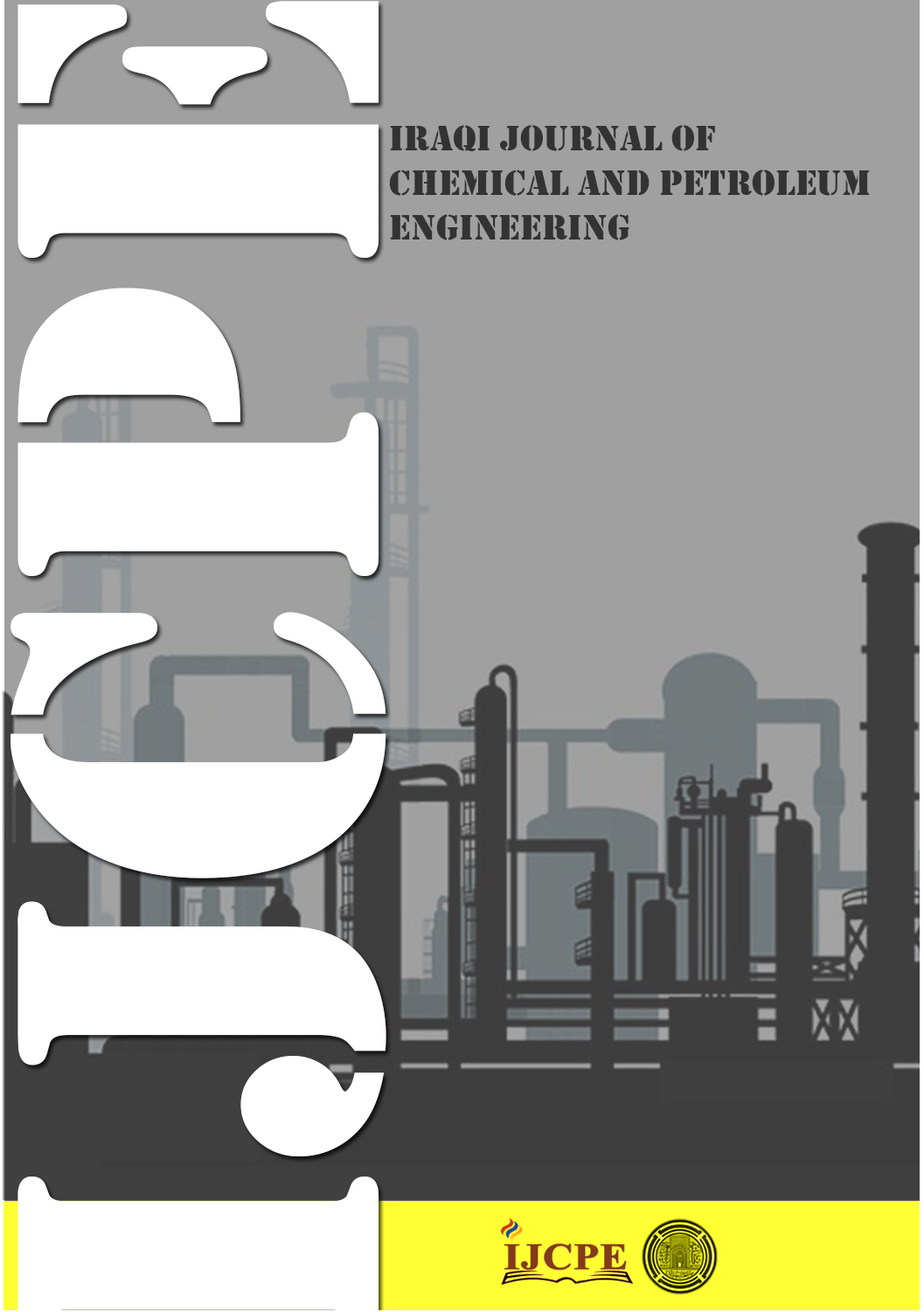Implementation of chemical injection with WJSTP in the Gullfaks field attributed to reservoir permeability
DOI:
https://doi.org/10.31699/IJCPE.2025.3.11Keywords:
Gullfaks field; static and dynamic model; permeability; WJSTP; Petrel; Eclipse; profitabilityAbstract
The Gullfaks field is a complex field and it’s divided into several formations, which have reservoirs in several stratigraphic layers and fragments of numerous faults. With current technological advancement techniques used in the Gullfaks field, the WJSTP is one of the solution-testing platforms that focuses on treating produced water for re-injection back into the reservoir to increase oil production. The implementation of chemical injection with WJSTP in the Gullfaks field, attributed to reservoir permeability to increase oil production, is the aim of this paper. To attest to the set aimed, a three-dimensional static model of the reservoir is constructed using data provided by NGB Geosciences Consulting LTD. With credit to the Petrel software simulation tool, an in-place volume estimate of 2,748,727,672.95 Bbls of oil and 970,264,150,943.39 SCF of gas was reviewed. Subsequently, a dynamic model is constructed on the foundation of the static model and the specified water injection parameters, and simulated with the use of the Eclipse software. The reduction in permeability of the reservoir's high-permeability zones through chemical injection of WJSTP resulted in 70% oil recovery, representing a 44.99% increase, and 74% gas recovery, representing a 37.9% increase. The sensitivity analysis conducted on oil price, oil production, and investment demonstrates that the viability of the project is highly contingent on the oil price. The findings of this study indicate that chemical injection of WJSTP represents a technically feasible and economically profitable method of enhancing oil production in the Gullfaks field.
Received on 13/07/2025
Received in Revised Form on 20/08/2025
Accepted on 20/08/2025
Published on 30/09/2025
References
[1] E. Umeagu, S. O. Osarenogowu, P. O. Ibemesi and O. J. Imarhiagbe, “Investigating the Impact of different Reservoir property Modeling Algorithms and their Associated uncertainties on volume estimation (gullfaks field, North Sea)”, International Journal of Engineering Applied Sciences and Technology, 4, 537-541, 2020.
[2] H Fossen, J Hesthammer, “Structural geology of the Gullfaks field, northern North Sea”, Special Publication-Geological Society of London, 127, 231- 262, 1998; https://doi.org/10.1144/GSL.SP.1998.127.01.16
[3] O. Petterson, A. Storli, E. Ljosland, O. Nygaard, I. Massie and H. Carlsen, “The Gullfaks field”: In: M54: Giant Oil and Gas Fields of the Decade 1978-1988, Book Chapter, P.429-446, 1992, https://doi.org/10.1306/M54555C26
[4] G. Yielding, J. A. Overland and G. Byberg, “Characterization of Fault Zones for Reservoir Modeling: An Example from the Gullfaks Field, Northern North Sea”, AAPG Bulletin, V. 83 925-951, 1999; https://doi.org/10.1306/E4FD2E29-1732-11D7-8645000102C1865D
[5] H. Fossen and J. Hesthammer, “Possible absence of small faults in the Gullfaks Field, northern North Sea: implications for downscaling of faults in some porous Sandstone”, Journal of Structural Geology, 22, 851-863, 2000; https://doi.org/10.1016/S0191-8141(00)00013-4
[6] H. Fossen, J. Hesthammer, “Structural geology of the Gullfaks Field, northern North Sea”, In: Coward, M.P., Johnson, H., Daltaban, T.S. (Eds.), Structural geology in reservoir characterization. Geological Society Special Publication, 127, pp. 231- 261, 1998; https://doi.org/10.1144/GSL.SP.1998.127.01.16
[7] O. Petterson, A. Storli, E. Ljosland and Massie, “The Gullfaks Field: geology and reservoir development”, In: North Sea Oil and Gas Reservoirs, - H. Norwegian Institute of Technology. Graham & Trotman, London, 67, 1990; https://doi.org/10.1007/978-94-009-0791-1_4
[8] H. Fossen and A. Rùrnes, “Properties of fault populations in the Gullfaks Field, northern North Sea”, Journal of Structural Geology, 18, 179-190, 1996; https://doi.org/10.1016/S0191-8141(96)80043-5
[9] B. D. M. Gauthier and S.D. Lake, “Probabilistic modeling of faults below the limit of seismic resolution in Pelican Field, North Sea, offshore United Kingdom”, American Association of Petroleum Geologists Bulletin, 77, 761-777, 1993; https://doi.org/10.1306/BDFF8D4E-1718-11D7-8645000102C1865D
[10] A.M. Roberts, G. Yielding, N.J. Kusznir, I.M. Walker and D. DornLopez, “Mesozoic extension in the North Sea: constraints from textural backstripping, forward modelling and fault populations”, In: Parker, J.R. (Ed.), Petroleum geology of northern Europe. Journal of the Geological Society, London, pp. 1123-1136, 1993; https://doi.org/10.1144/0041123
[11] D. Rouby, H. Fossen, P. R. Cobbold, “Extension, Displacement, and Block Rotation in the Larger Gullfaks Area, Northern North Sea: Determined from Map View Restoration, northern North Sea”, Geoscienceworld, V80, 1996, https://doi.org/10.1306/64ED88F4-1724-11D7-8645000102C1865D
[12] H. Fossen and A. Rùrnes, “Properties of fault populations in the Gullfaks Field, northern North Sea”, Journal of Structural Geology, 18, 179-190, 1996; https://doi.org/10.1016/S0191-8141(96)80043-5
[13] O. Anes, R. Haga, Instefjord and K.G. Jakobsen, “The Gullfaks Lower Brent Waterflood Performance”, paper presented at the 6th European Symposium on Improved Oil Recovery, Stavanger, Norway, 1991; https://doi.org/10.3997/2214-4609.201411271
[14] S. Tollefsen, E. Graue and S. Svinddal, “The Gullfaks Field Development: Challenges and Perspectives”, Paper presented at the European Petroleum Conference, Cannes, France, Paper Number: SPE-25054-MS, 1992; https://doi.org/10.2118/25054-MS
[15] S. N. Ehrenberg and K. G. Jakobsen, “Plagioclase Dissolution Related to Biodegradation of Oil in Brent Group Sandstones (Middle Jurassic) of Gullfaks Field”, Northern North Sea, Chapter pages 541-559 of Book: “Sandstone Diagenesis”: Recent and Ancient, Editors: Stuart D. Burley and Richard H. Worden, Wiley, 2003; https://doi.org/10.1002/9781444304459.ch34
[16] D. Asante Otchere, D. Hodgetts, T. Arbi Omar Ganat, N. Ullah and A. Rashid, Static “Reservoir Modeling Comparing Inverse Distance Weighting to Kriging Interpolation Algorithm in Volumetric Estimation”, Case Study: Gullfaks Field, Paper presented at the Offshore Technology Conference, Virtual and Houston, Texas, Paper Number: OTC-30919-MS, 2021; https://doi.org/10.4043/30919-MS
[17] S. Talukdar and R. Instefjord, “Reservoir Management of the Gullfaks Main Field”, Paper presented at the Europec/EAGE Conference and Exhibition, Rome, Italy, Paper Number: SPE-113260-MS, 2008; https://doi.org/10.2118/113260-MS
[18] L. Pyliotis, “History Matching Of Production Data Using an Updated Static Model. A case study from Gullfaks, Technical University of Crete, School of Mineral Resources”, Engineering Petroleum Engineering, Master Thesis, 2017.
[19] R. Instefjord and A. Chazy Todnem, “10 Years of WAG Injection in Lower Brent at the Gullfaks Field”, Paper presented at the European Petroleum Conference, Aberdeen, United Kingdom, Paper Number: SPE-78344-MS, 2002; https://doi.org/10.2118/78344-MS
[20] A. Cheage Chamgoué, C. L. Kombou, M. Tchouate Ngankap, J. Metsebo and Ateh Armstrong Akoteh, “Improving the Recovery of Hydrocarbons in a Well in the Gullfaks Field by Injecting Sequestrated CO2”, Iraqi Journal of Chemical and Petroleum Engineering, 24, 1-4, 2023; https://doi.org/10.31699/IJCPE.2023.1.1
[21] A. R. Awan, R. Teigland and J. Kleppe, “A Survey of North Sea Enhanced-Oil-Recovery Projects Initiated During the Years 1975 to 2005”, SPE Res Eval & Eng, 11 (03): 497–512, 2008; https://doi.org/10.2118/99546-PA
[22] P. Valkó, W. John Lee, “A Better Way to Forecast Production from Unconventional Gas Wells”, Society of Petroleum Engineers, SPE-134231-MS, 2010, https://doi.org/10.2118/134231-MS
[23] R. Robinson and S. Hsu, “Introduction to Petroleum Technology”, Book, Chapter pp 1–83, 2017, https://doi.org/10.1007/978-3-319-49347-3_1
[24] A. Iske, T. Randen. “Mathematical Methods and Modelling in Hydrocarbon Exploration and Production”, Book, 1st edition, 2005, Springer Berlin, https://doi.org/10.1007/b137702
[25] M. S. Zaman, M. R. Islam, S. Mokhatab, “Nanotechnology Prospects in the Petroleum Industry”, Petroleum Science and Technology, V.30, P.1053-1058, 2012, https://doi.org/10.1080/10916461003752553
[26] M. Nassabeh, Z. You, A. Keshavarz, and S. Iglauer; “Hybrid EOR Performance Optimization through Flue Gas–Water Alternating Gas (WAG) Injection: Investigating the Synergistic Effects of Water Salinity and Flue Gas Incorporation”, Energy Fuels, 38, 15, 13956–13973, 2024, https://doi.org/10.1021/acs.energyfuels.4c00757
[27] H. Alkan , F. Kögler, G. Namazova, S. Hatscher, W. Jelinek, and M. Amro: “Assessment of the Biogenic Souring in Oil Reservoirs under Secondary and Tertiary Oil Recovery”, Energies, 17(11), 2681, 2024; https://doi.org/10.3390/en17112681
[28] H. Ghorbanpour and E. Khodapanah: “Comprehensive review of hybrid chemical enhanced oil recovery methods: synergistic mechanisms, applications, and insights into chemical-based water alternating gas techniques”, Journal of Petroleum Exploration and Production Technology, Volume15, No 98, 2025; https://doi.org/10.1007/s13202-025-01999-5
[29] C. Dai, Q.You, X. Liu, W. Wu, L. He, F. Zhao, “Study and Field Application of Organic/Inorganic Cross-Linking Blocking Agent for High Temperature Reservoir”, Society of Petroleum Engineers, SPE-153384-MS, 2012, https://doi.org/10.2118/153384-MS
Downloads
Published
Issue
Section
License
Copyright (c) 2025 The Author(s). Published by College of Engineering, University of Baghdad.

This work is licensed under a Creative Commons Attribution 4.0 International License.













